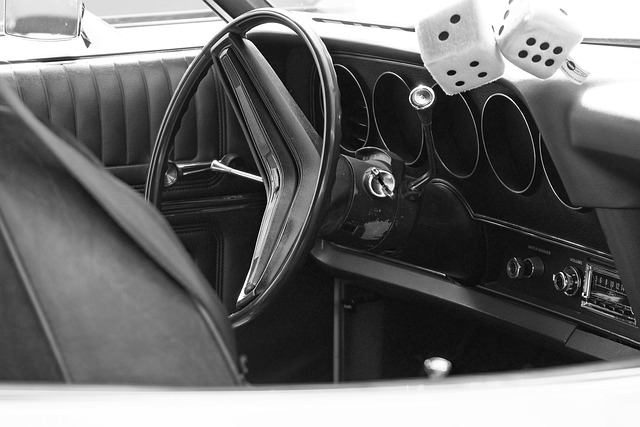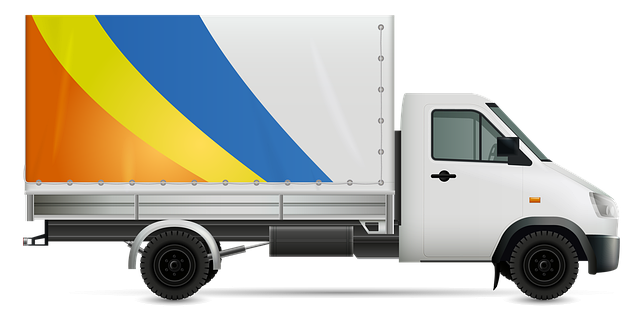Looking to register your car in California? This comprehensive guide walks you through the process step-by-step. First, understand the state’s unique car registration requirements. Then, gather all necessary documents for a smooth visit to the DMV. Next, perform a crucial dmv VIN verification to ensure compliance. Complete the application and make the required payment, and finally, receive your registration plate and essential documentation.
- Understand California Car Registration Requirements
- Gather Necessary Documents for DMV Visit
- Perform Vehicle Identification Number (VIN) Verification
- Complete Application and Payment at DMV
- Receive Your Registration Plate and Documentation
Understand California Car Registration Requirements

Before registering your car in California, it’s crucial to understand the state’s specific requirements. The California Department of Motor Vehicles (DMV) mandates several steps for new and transferred vehicle registrations. One critical aspect is the DMV VIN verification, which ensures that the vehicle’s Vehicle Identification Number (VIN) matches the details on record. This process involves checking the car’s history, including any previous accidents or outstanding issues, to confirm it’s safe to operate on California roads.
Additionally, you’ll need to provide proof of insurance, a completed application form, and the necessary fees. The vin inspection is typically done during this process, either through an online system or by visiting a local DMV office. If you opt for a mobile vin verifier, it can streamline the initial steps by enabling you to conduct the VIN check from the comfort of your home or on-the-go, making registration more convenient and efficient.
Gather Necessary Documents for DMV Visit
Before heading to the DMV, make sure you gather all the essential documents for a smooth registration process. One crucial step is to obtain a DMV VIN verification – this involves confirming the vehicle’s unique identification number (VIN) and its status through an official channel. You can facilitate this with a mobile vin inspection or by using a mobile vin verifier.
Having these documents ready will save you time at the DMV. Also, ensure that your car has a valid registration from its previous state of residence, proof of insurance, and any applicable emissions test results. Remember to bring along your driver’s license, as well as payment for the registration fee – typically paid by cash, check, or debit card.
Perform Vehicle Identification Number (VIN) Verification

Before registering your car in California, it’s crucial to ensure that the Vehicle Identification Number (VIN) is legitimate and matches the vehicle you own. This process, often referred to as DMV VIN verification, plays a vital role in ensuring accurate record-keeping and preventing fraud. You can perform this check by utilizing various official channels provided by the Department of Motor Vehicles (DMV).
One efficient method gaining popularity is through mobile vin verification services. These services send a technician to your location to conduct an on-site inspection, offering convenience and saving you the hassle of visiting a DMV office. Alternatively, some apps also allow remote vin verification, where you can simply input your VIN for immediate validation. This modern approach streamlines the process, especially for those with busy schedules or limited mobility.
Complete Application and Payment at DMV

After gathering all the required documents, it’s time to complete the registration process at the California DMV (Department of Motor Vehicles). You’ll need to fill out Form DMV-123, which includes details about your vehicle and personal information. Make sure to double-check all the information for accuracy, especially the Vehicle Identification Number (VIN), as this is crucial for vin verification. This step involves a fee payment, which can be done online or in person.
One convenient option to streamline the process is by utilizing a mobile vin inspection or mobile vin verifier service. These services allow you to have a professional perform the VIN verification on your behalf, ensuring all data is accurate and up-to-date. This can save time and eliminate the need for an in-person visit to the DMV, making registration more efficient.
Receive Your Registration Plate and Documentation

After submitting your application, it’s time to receive your official registration plate and important documentation from the DMV (Department of Motor Vehicles). This crucial step involves several key elements. First, you’ll get a confirmation number and a temporary registration permit, allowing you to operate your vehicle legally while waiting for the permanent plates. The process may also include a vin inspection or DMV vin verification, where the unique vehicle identification number (VIN) is cross-checked against their records to ensure authenticity and prevent fraud.
Once approved, the DMV will issue your personalized registration plate, typically with a unique combination of letters and numbers. Along with the plates, you’ll receive comprehensive documentation outlining ownership details, insurance information, and other essential compliance matters. Additionally, some individuals opt for a mobile vin verifier to streamline this step, as it provides on-demand vin verification services, making the registration process more convenient.
Registering a car in California involves several straightforward steps, from understanding the requirements to completing the necessary paperwork. By gathering all required documents, including proof of ownership and insurance, and performing a DMV VIN verification, you’re well on your way to securing your vehicle’s registration. Ensure all applications are filled out accurately and payments are made correctly to receive your registration plate and essential documentation without delay.
